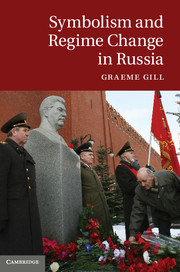and Balkan Europe
by IECOB & AIS Università di Bologna

Symbolism and Regime Change in Russia
by: Graeme Gill
published by: Cambridge University Press
pp: 326
ISBN: 9781107031395
price: 95 $

During the Soviet period, political symbolism developed into a coherent narrative that underpinned Soviet political development. Following the collapse of the Soviet regime and its widespread rejection by the Russian people, a new form of narrative was needed, one which both explained the state of existing society and gave a sense of its direction. By examining the imagery contained in presidential addresses, the political system, the public sphere and the urban development of Moscow, Graeme Gill shows how no single coherent symbolic programme has emerged to replace that of the Soviet period. Laying particular emphasis on the Soviet legacy, and especially on the figure of Stalin, 'Symbolism and Regime Change in Russia' explains why it has been so difficult to generate a new set of symbols which could constitute a coherent narrative for the new Russia.
Table of contents
1. Symbolism and regime change
2. Dissolution of the Soviet metanarrative
3. The leader's vision
4. The symbolism of the political arena
5. Russian identity in the public arena
6. Moscow: a material basis for post-Soviet identity?
Conclusion: the difficulties of a post-Soviet narrative.
About the author
Graeme Gill, University of Sydney
Graeme Gill is Professor of Government and Public Administration at the University of Sydney and a Fellow of the Academy of Social Sciences in Australia. His previous publications include Symbols and Legitimacy in Soviet Politics (Cambridge University Press, 2011).
PECOB: Portal on Central Eastern and Balkan Europe - University of Bologna - 1, S. Giovanni Bosco - Faenza - Italy
Chiudi la versione stampabile della pagina e ritorna al sito.